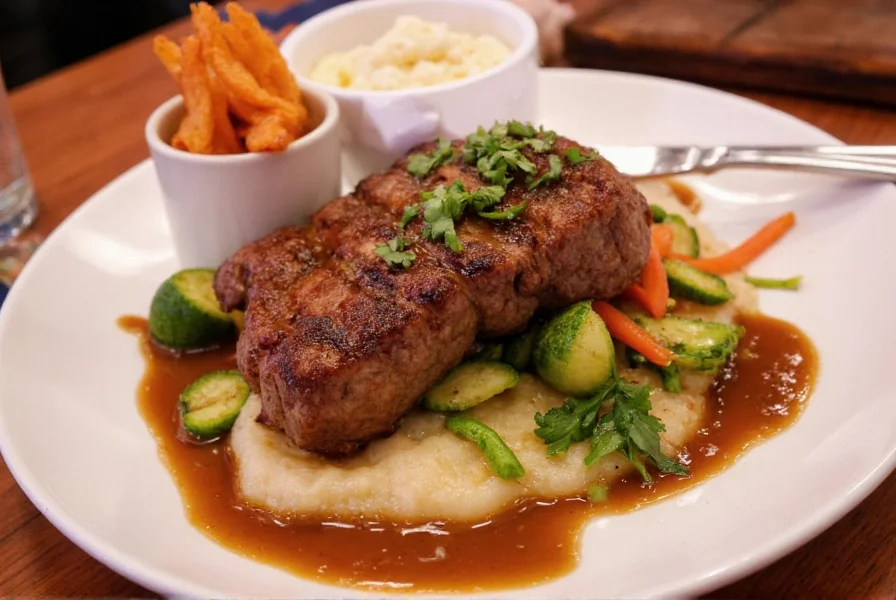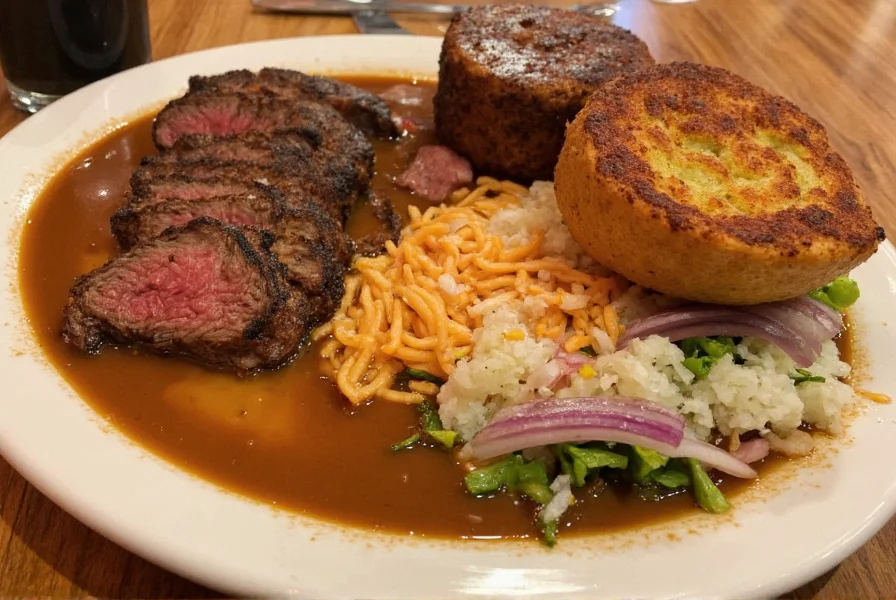Table of Contents
Location and Hours
Copacabana Brazilian Steakhouse is conveniently located at 4960 Fallsview Boulevard, Niagara Falls, Ontario, Canada. Situated in the heart of the tourist district, it's just minutes away from the famous Horseshoe Falls and other major attractions. The restaurant is open daily from 11:30 AM to 10:00 PM, with dinner service ending at 9:00 PM. We recommend checking our official website or calling ahead for seasonal hour changes during holidays.
Menu Highlights
Experience authentic Brazilian cuisine at Copacabana, where traditional churrasco techniques bring out the natural flavors of premium cuts of meat. Our signature dishes include:
- Picanha (Top Sirloin): A Brazilian favorite, seasoned with our proprietary "tempero baiano" spice blend and grilled to perfection.
- Frango (Marinated Chicken): Tender chicken thighs infused with citrus and herbs, served with traditional farofa (toasted cassava flour).
- Feijoada: A rich black bean stew with smoked meats, slow-cooked for 12 hours to develop deep, complex flavors.
- Salad Bar: Over 30 fresh ingredients including tropical fruits, artisanal cheeses, and locally sourced vegetables.

Pricing and Reservations
Copacabana offers a traditional rodizio dining experience with prices ranging from $35-$55 per person, depending on the meat selection. We also provide a la carte options and a separate salad bar menu. Reservations are highly recommended, especially during peak tourist seasons and weekends. You can book online through our website or by calling (905) 356-7890. For groups of 6 or more, reservations are required.
| Dish | Description | Price |
|---|---|---|
| Picanha | Prime top sirloin with Brazilian spice blend | $28.99 |
| Feijoada | Traditional black bean stew with smoked meats | $18.50 |
| Salad Bar | 30+ fresh ingredients with tropical fruits | $12.99 |
Frequently Asked Questions
Do you offer vegetarian or vegan options?
Yes, our extensive salad bar and side dish selection includes many vegetarian options. For vegans, we offer vegetable-based sides and salads. While our rodizio service focuses on meats, the salad bar and side dishes can be enjoyed by vegetarians and vegans alike. Just inform your server of your dietary preferences.
Is parking available at Copacabana?
Yes, we offer a dedicated restaurant parking lot and validate parking for guests at nearby Fallsview Casino Resort's parking garage. Street parking is available but limited in the busy tourist district.
What makes your Brazilian cuisine authentic?
We maintain authenticity through traditional Brazilian spice blends like "tempero baiano" for meat preparation, importing key ingredients directly from Brazil when possible, employing chefs with Brazilian culinary training, and following the traditional "churrasco" rodizio service style where "gauchos" (servers dressed as Brazilian cowboys) bring various grilled meats tableside.
Conclusion
Copacabana Brazilian Steakhouse offers an authentic taste of Brazil in the heart of Niagara Falls. With premium grilled meats, traditional dishes, and exceptional service, it's the perfect destination for food lovers seeking a memorable dining experience. Reserve your table today and discover why we're a top-rated Brazilian restaurant in Canada.











 浙公网安备
33010002000092号
浙公网安备
33010002000092号 浙B2-20120091-4
浙B2-20120091-4